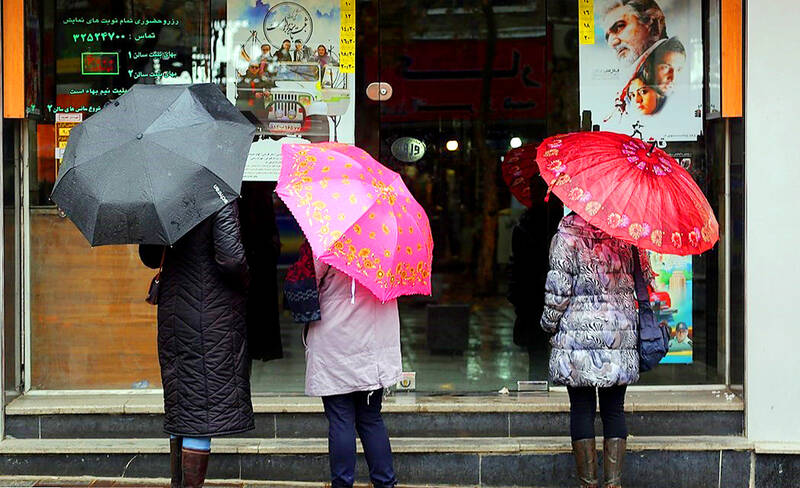對話 Dialogue
清清:唉!臺灣北部的冬天和南部的真不一樣!
Qīngqing: Āi! Táiwān běibù de dōngtiān hé nánbù de zhēn bùyíyàng!

PHOTO COURTESY OF Wikimedia Commons / 照片:Wikimedia Commons 提供
華華:是嗎?怎麼說?
Huáhua: Shìma? Zěnme shuō?
清清:北部相對來說比較冷,氣溫可能會下降到十度左右,甚至更低,所以厚一點的衣服是必需的。南部通常都在二十度以上,穿件薄外套就夠了
Qīngqing: Běibù xiāngduì láishuō bǐjiào lěng, qìwēn kěnéng huì xiàjiàng dào shí dù zuǒyòu, shénzhì gèng dī, suǒyǐ hòu yìdiǎn de yīfú shì bìxū de. Nánbù tōngcháng dōu zài èrshí dù yǐshàng, chuān jiàn báo wàitào jiù gòule.
華華:只有溫度上的差異嗎?
Huáhua: Zhǐyǒu wēndù shàng de chāyì ma?
清清:不是,還有北部的冬天愛下雨,尤其是在山區,南部的冬季比較乾燥。
Qīngqing: Búshì, háiyǒu běibù de dōngtiān ài xiàyǔ, yóutóng shì zài shānqū, nánbù de dōngjì bǐjiào gānzào
華華:原來如此,想不到臺灣這麼小,但北部和南部卻各有特色!
Huáhua: Yuánlái rúcǐ, xiǎngbúdào Táiwān zhème xiǎo, dàn běibù hàn nánbù què gèyǒu tèsè!
清清:是的,所以建議你兩邊都住住看,體驗一下不一樣的感覺!
Qīngqing: Shìde, suǒyǐ jiànyì nǐ liǎngbiān dōu zhùzhùkàn, tǐyàn yíxià bùyíyàng de gǎnjué!
華華:等我下次換工作的時候再說吧!
Huáhua: Děng wǒ xiàcì huàn gōngzuò de shíhou zàishuō ba!
翻譯 Translation
Qingqing: Sigh! The winter in northern Taiwan is really different from the south!
Huahua: Is it? How so?
Qingqing: The north is relatively colder. The temperature can drop to around 10 degrees Celsius or even lower, so wearing thicker clothing is necessary. The south usually stays above 20 degrees, and a light jacket is enough.
Huahua: Is the temperature the only difference?
Qingqing: No, on top of that, it tends to rain in the winter in the north, especially in the mountainous areas, while the southern winter is comparatively dry.
Huahua: I see. I didn’t realize that Taiwan, despite being small, has such distinct weather in the north and south!
Qingqing: That’s right. So, I suggest you try living in both regions to experience the different feelings!
Huahua: I’ll consider that when I change jobs next time!
生詞 Vocabulary
1. 相對來說 (xiāngduì láishuō) relatively, comparatively
2. 氣溫 (qìwēn) (weather) temperature
3. 甚至 (shénzhì) even
4. 厚/薄 (hòu/báo) thick/thin
5. 必需 (bìxū) necessary, required
6. 差異 (chāyì) difference
7. 山區 (shānqū) mountainous area, in the mountain
8. 乾燥 (gānzào) dry, dryness
教材音檔 Audio Files
國立清華大學華語中心提供
By National Tsing Hua University Chinese Language Center:

In an effort to fight phone scams, British mobile phone company O2 has introduced Daisy, an AI designed to engage phone con artists in time-wasting conversations. Daisy is portrayed as a kindly British granny, exploiting scammers’ tendency to target the elderly. Her voice, based on a real grandmother’s for authenticity, adds to her credibility in the role. “O2” has distributed several dedicated phone numbers online to direct scammers to Daisy instead of actual customers. When Daisy receives a call, she translates the scammers’ spoken words into text and then responds to them accordingly through a text-to-speech system. Remarkably, Daisy

Bilingual Story is a fictionalized account. 雙語故事部分內容純屬虛構。 Emma had reviewed 41 resumes that morning. While the ATS screened out 288 unqualified, she screened for AI slop. She could spot it a mile away. She muttered AI buzzwords like curses under her breath. “Team player.” “Results-driven.” “Stakeholder alignment.” “Leveraging core competencies.” Each resume reeked of AI modeling: a cemetery of cliches, tombstones of personality. AI wasn’t just changing hiring. It was draining the humanity from it. Then she found it: a plain PDF cover letter. No template. No design flourishes. The first line read: “I once tried to automate my

Every May 1, Hawaii comes alive with Lei Day, a festival celebrating the rich culture and spirit of the islands. Initiated in 1927 by the poet Don Blanding, Lei Day began as a tribute to the Hawaiian custom of making and wearing leis. The idea was quickly adopted and officially recognized as a holiday in 1929, and leis have since become a symbol of local pride and cultural preservation. In Hawaiian culture, leis are more than decorative garlands made from flowers, shells or feathers. For Hawaiians, giving a lei is as natural as saying “aloha.” It shows love and

1. 他走出門,左右看一下,就過了馬路。 ˇ He walked outside, looked left and right, and crossed the road. χ He walked outside and looked left and right, crossed the road. 註︰並列連接詞 and 在這句中連接三個述語。一般的結構是 x, y, and z。x and y and z 是加強語氣的結構,x and y, z 則不可以。 2. 他們知道自己的弱點以及如何趕上其他競爭者。 ˇ They saw where their weak points lay and how they could catch up with the other competitors. χ They saw where their weak points lay and how to catch up with the other competitors. 註:and 一般連接同等成分,結構相等的單詞、片語或子句。誤句中 and 的前面是子句,後面是不定詞片語,不能用 and 連接,必須把不定詞片語改為子句,and 前後的結構才相等。 3. 她坐上計程車,直接到機場。 ˇ She took a cab, which took her straight to the airport. ˇ She took a cab and it took her straight